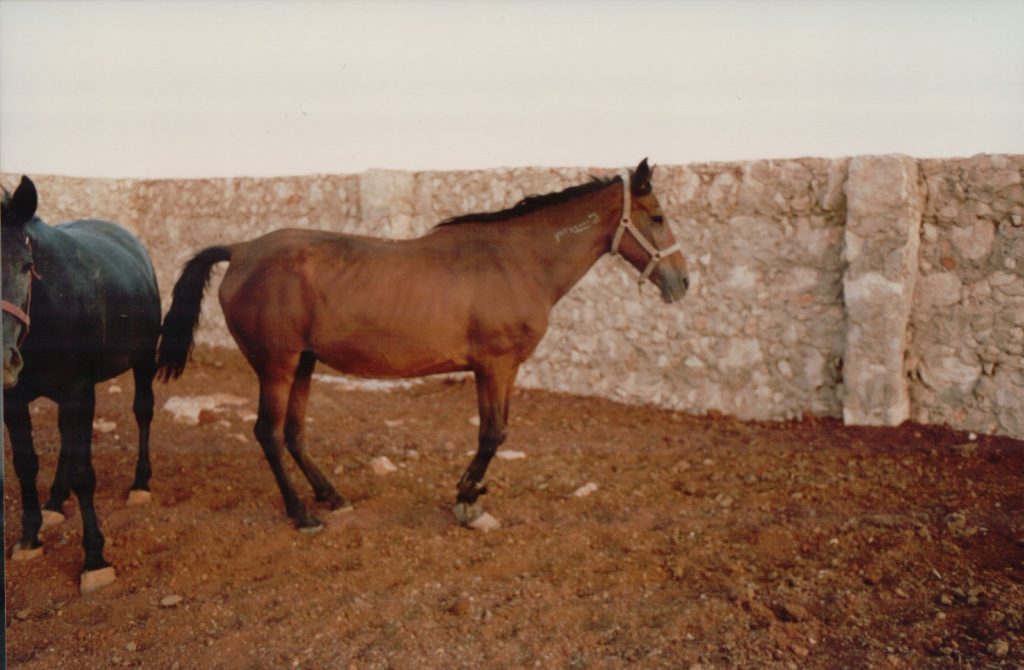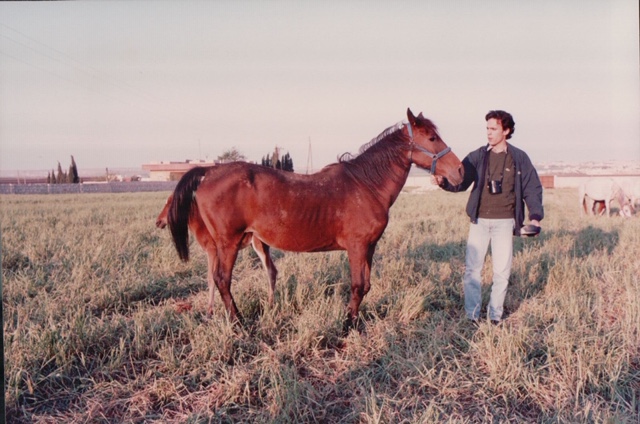Ghallaieh, 1973 desert-bred Kuhaylat al-Krush from the Shammar
Another set of old photos I just scanned today features the Syrian desert bred mare Ghallaieh at the farm of Radwan Shabareq north of Aleppo, near the town of ‘Azaz. She was old and lame (you can see the broken front leg) and rather plain in the head, but what a grand and powerful mare she was. I took the first photo in 1998. My father took the second photo in 1996, and you can see a youthful me (the hair!) holding her halter.


She was a bay Kuhaylat al-Krush from the breeding of Rakan al-Nuri al-Mashal Basha al-Jarba, from the leading family of the Shammar. Mashal was the son of the famous Faris al-Jarba.
The strain reached this family of the Jarba Shammar Sheykhs from their maternal uncles the Sheikh of the Tai Farhan al-Abd al-Rahman sometime in the 1950s or even 1960s. From here, there are two stories.
One story is that the Sheykhs of the Tai obtained it from the Shammar who had it since the time of ‘Amsheh and Ibn Rashid (see next blog entry on the black mare).
Another story is that Tai got the strain from the Fadaan.
Ghallaieh was the daughter of a black Saqlawi Marzakani (originally a Saqlawi Nijm al-Subh line) of the horses of Al-Anud, the sister of the Sheykh of Tai. She had received him from the Maraziq clan of the Shammar as a colt. Ghallaieh’s dam was also by the same black horse.
For the sake of completeness, the iron grey mare in the first picture is a Shuwaymah from the breeding of Radwan, a daughter of Al-Aawar and Dallah. The bay filly behind Ghallaieh was her daughter by Al Aawar, which we bought from Radwan during that trip. The grey in the distant background was a Saqlawiyah Ibn ‘Amud from the breeding of Muhammad al-‘Abd al-Slaiman al-Rhayyil of the Tai, with a daughter by Al Aawar also by her side.
Thanks so much for sharing this precious information that help to many of us understand our horses and people that breed them for thousand of years,the true breeders of the arabian horse as you know in the western world
Sorry,I would say as we know in the western world
I see in Krush line many bays
She must have been very tough, to survive a broken leg. Would have loved to have seen her before the broken leg and her compensatory stance – she certainly looks like she was a powerful mover, from the sloping shoulder to the deep heart girth and well-sprung ribs, to her haunches with what looks like a respectable length of hip, even with her pelvis tilted to bring her hind legs right underneath her body. She must have flown like the wind.
I bet she reminds you of YOUR black lady! Not just being crippled, and as Kate says,, her compensatory stance, that enormous heart girth.